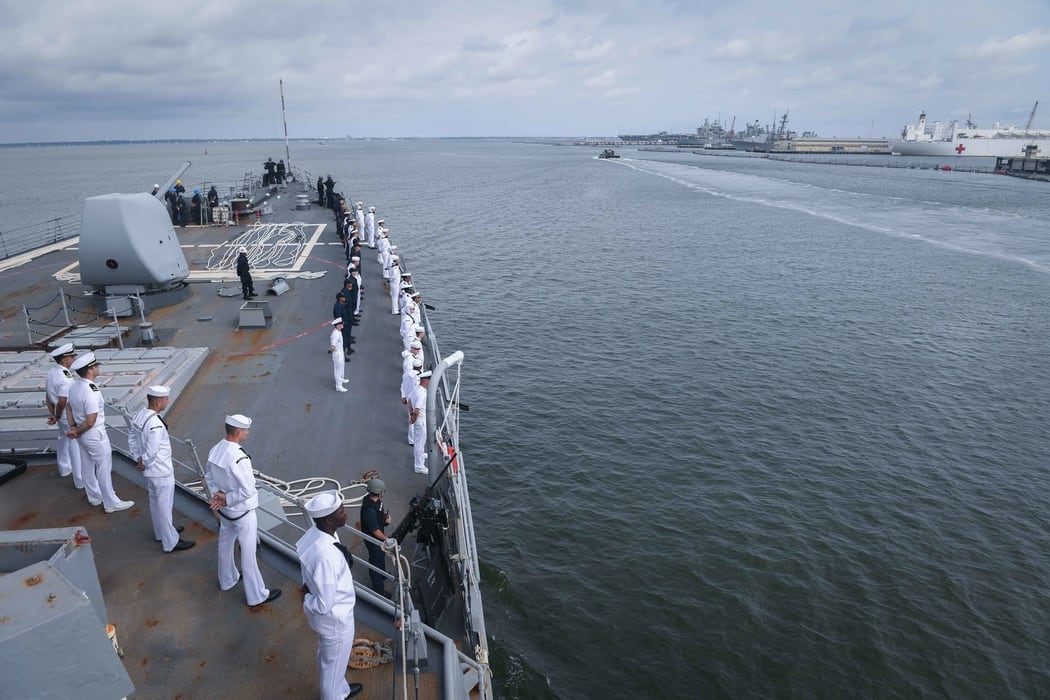The Pentagon’s get-tough policy on troops who can’t deploy took effect on Oct. 1 and it’s poised to boot thousands of sailors nationwide from the Navy.
The brainchild of Defense Secretary James Mattis, a retired four-star Marine general, the plan calls for sending home all troops who have been ineligible to deploy overseas for more than 12 consecutive months.
“As Secretary Mattis has said before, ’every action will be designed to ensure our military is ready to fight today and in the future.’ This new department-wide retention policy is based on the underlying premise that in order to build and maintain a ready, lethal force, all military members must be deployable,” said Pentagon press secretary Dana White.
While it carves out exemptions for wounded warriors, pregnant sailors and post-partum moms, the new policy promises to weed out personnel who can’t contribute to the military’s missions overseas and often hog billets coveted by fit troops in the United States.
Approximately 11 percent of the 2.1 million personnel serving on active duty in all the services, their reserves and the National Guard are currently non-deployable, according to the Joint Chiefs of Staff.
Of the roughly 235,000 non-deployable troops, about 99,000 are on the list for administrative reasons — everything from not having all their immunizations or failing to update dental records to ongoing legal problems.
Another 116,000 are recovering from injuries or illnesses.
The other 20,000 are pregnant and exempt from the cuts.

Cmdr. Richard Huth, the deputy director of Distribution Management at Navy Personnel Command, counts about 20,000 personnel who can’t qualify today for sea duty.
That’s roughly 5 percent of the force.
In a written statement to Navy Times, Huth said his service will meet the objectives of the Mattis plan “to maximize lethality and readiness.”
All sailors are expected to be deployable and the Navy will focus on making sure that those who can go to sea stay fit, he added.
Huth’s boss, Chief of Naval Personnel Vice Adm. Bob Burke, emphasized the tougher policy during a Sept. 25 online all-hands call.
“If you go 12 consecutive months, not qualified for sea duty — which is our rough metric for deployability in the Navy because we’re a seagoing service — then you are subject to processing for administrative separation, “ Burke said. “This doesn’t necessarily mean you will be separated, but you will be looked at for separation.”
RELATED

Huth said that look begins 12 months after a sailor has been marked as non-deployable. For many sailors, that clock started ticking long before the Pentagon’s Oct. 1 policy rollout.
They will soon be notified by naval message, letter or email that they are being screened for mandatory processing for administrative separation or a referral to the Disability Evaluation System.
Going forward, all notifications will occur on a monthly basis, Huth said.
But Burke held out hope for some sailors who are trying to get back into shape to ship out.
“We’ll look at this on a case basis and extenuating circumstances will be considered,” Burke said.
For example, sailors over the one-year deadline but who are making progress to get fit for sea duty could be retained, Burke indicated.
“Those who have started the evaluation process and have follow-on appointments, we understand that,” he said.
Master Chief Petty Officer of the Navy Russ Smith echoed Burke.
“The policy isn’t intended to run someone out of the Navy because they have a medical issue," Smith told Navy Times. "As we’re growing to be the Navy the nation needs, we want to keep as many of our shipmates on the team — ready for the fight.
“Medical treatment facilities and commands will assess a sailor’s ability to perform his or her duties, taking into consideration any ongoing medical treatment or administrative limitations."

The Pentagon’s plan was announced in February and official guidance followed in late July. The Department of Defense directive freed the services to create their own rules on how to monitor personnel and evict them if they can’t deploy.
The Navy heaped increasing responsibilities on individual sailors to get in shape, stay out of legal trouble and prepare to go overseas.
“While command leadership is responsible for overall personnel readiness, our sailors bear the ultimate responsibility for their individual readiness and deployability status,” said Rear Adm. Jeff Hughes, Burke’s deputy at Navy Personnel Command. “This new program is designed to help our force successfully achieve both goals.”
RELATED

In a Sept. 26 Navy directive, officials reiterated that unit leaders must report up the chain of command a sailor’s ability to perform “appropriate military duties commensurate with his or her office, grade, rank, or skill in light of ongoing medical treatment or administrative limitations.”
For sailors with chronic medical conditions, commanding officers don’t even need to wait 12 months to start retirement or discharge proceedings. They can refer them to medical evaluation boards and begin the involuntary separation process, officials said.
Last year, military leaders began allowing Navy Personnel Command detailers to scan the medical status of a sailor up to a year before a potential deployment to see if he or she can be cut orders.
“These last-minute surprises should now be kept to a minimum,” Burke said. “With the longer detailing windows, if there is something that’s come up we will have plenty of time to identify a new relief and get them there in time to avoid gaps in critical overseas billets.”
That’s been a constant headache for the Navy over the past five years. A 2013 analysis by the Navy’s internal watchdog agency, the Naval Audit Service, estimated that up to 16,000 sailors could not deploy.
That was a number four times greater than what the Navy reported as its official limited duty population.
That’s unacceptable to a Navy that’s stretched across the globe, including warships and units deployed close to potential trouble spots.
“The whole point of this policy is to maximize our warfighting readiness by ensuring sailors are prepared for deployment at all times," said MCPON Smith. "The fight doesn’t wait, so neither should we. This is a matter of survivability. Sailors are expected to be deployable and to maintain their medical, physical and administrative readiness.”

Beyond medical maladies, the Navy can bar sailors from going overseas if they can’t lawfully carry a firearm due to a criminal conviction; have received conscientious objector status; or became the sole surviving family member.
Sailors also can become temporarily non-deployable if they fail to file Family Care Plans or draw special orders to take care of sick relatives.
Troops who are under arrest, jailed, pending legal action in court or are under criminal investigation also will be removed from the deployment rolls. Personnel who have been marked as material witnesses in these cases also can be blocked from deploying.
Officials insist that chronic truancy for scheduled medical and dental appointments and hiding conditions that impact a sailor’s ability to go to sea or serve overseas will factor significantly into whether he or she will be involuntarily separated from the service.
To drive that point home, the Navy now requires commands to wield written counseling statements and adverse performance evaluations “to document a sailor’s knowing failure to comply with responsibilities to maintain individual readiness,” according to the directive.
Under the new policy, sailors who are notified that they face involuntary separation for administrative reasons must personally submit retention requests with their commands.
The retention determination authority will then decide “if it is in the best interest of the Navy to retain a sailor,” Huth said.
If a sailor’s health improves or the administrative glitches are fixed, he or she will be reclassified as deployable and the process for any pending retention determination will be cancelled, Huth added.
The secretary of the Navy also can grant retention on a case-by-case basis.
“We’re in a new game here. Our potential adversaries are working overtime to overtake us,” Burke said “We’ve got to be lean and lethal. We don’t have a lot of room to be carrying people on the books that aren’t able to be in warfighting trim.”
Mark D. Faram is a former reporter for Navy Times. He was a senior writer covering personnel, cultural and historical issues. A nine-year active duty Navy veteran, Faram served from 1978 to 1987 as a Navy Diver and photographer.




